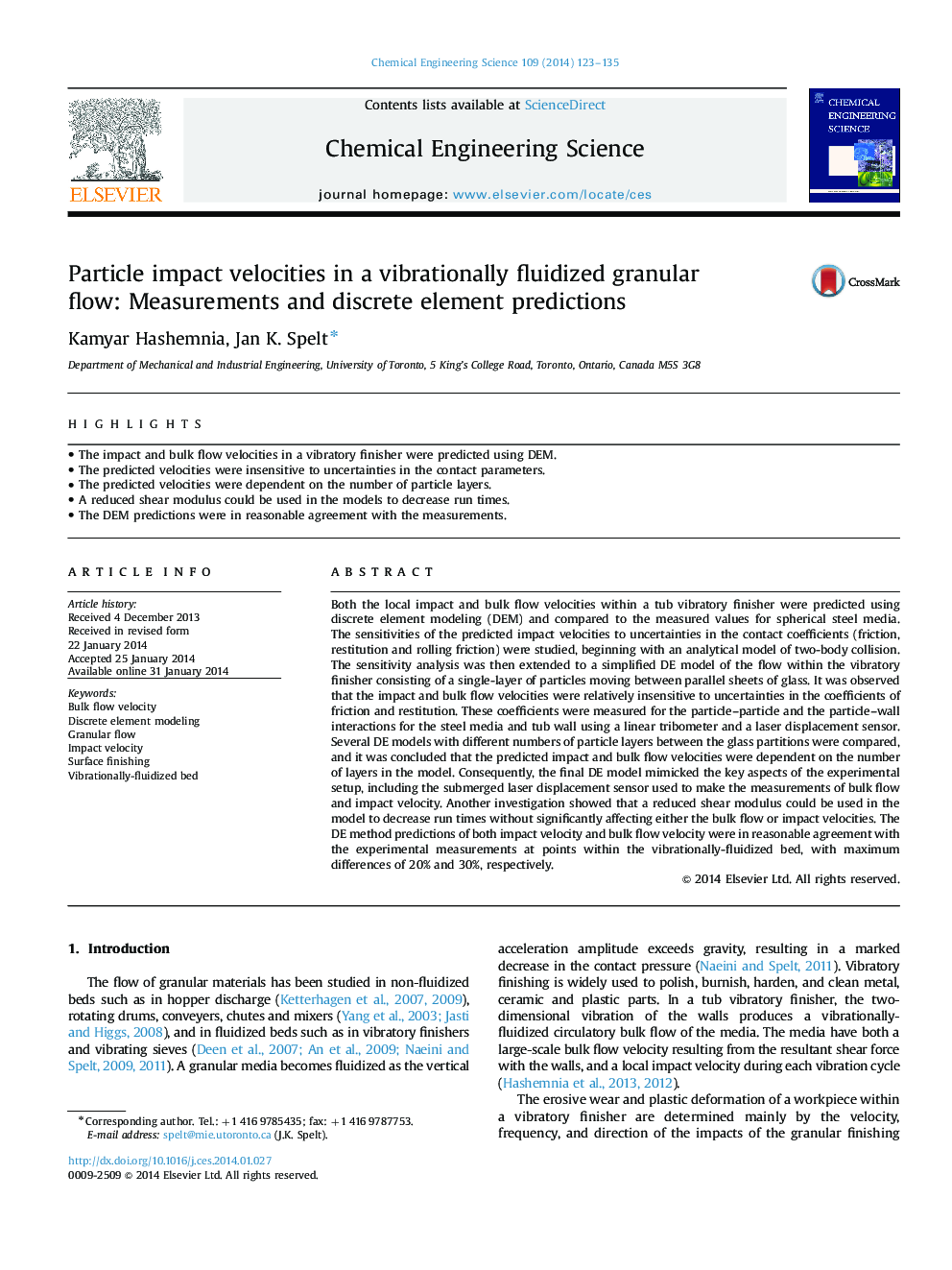| کد مقاله | کد نشریه | سال انتشار | مقاله انگلیسی | نسخه تمام متن |
|---|---|---|---|---|
| 154887 | 456873 | 2014 | 13 صفحه PDF | دانلود رایگان |

• The impact and bulk flow velocities in a vibratory finisher were predicted using DEM.
• The predicted velocities were insensitive to uncertainties in the contact parameters.
• The predicted velocities were dependent on the number of particle layers.
• A reduced shear modulus could be used in the models to decrease run times.
• The DEM predictions were in reasonable agreement with the measurements.
Both the local impact and bulk flow velocities within a tub vibratory finisher were predicted using discrete element modeling (DEM) and compared to the measured values for spherical steel media. The sensitivities of the predicted impact velocities to uncertainties in the contact coefficients (friction, restitution and rolling friction) were studied, beginning with an analytical model of two-body collision. The sensitivity analysis was then extended to a simplified DE model of the flow within the vibratory finisher consisting of a single-layer of particles moving between parallel sheets of glass. It was observed that the impact and bulk flow velocities were relatively insensitive to uncertainties in the coefficients of friction and restitution. These coefficients were measured for the particle–particle and the particle–wall interactions for the steel media and tub wall using a linear tribometer and a laser displacement sensor. Several DE models with different numbers of particle layers between the glass partitions were compared, and it was concluded that the predicted impact and bulk flow velocities were dependent on the number of layers in the model. Consequently, the final DE model mimicked the key aspects of the experimental setup, including the submerged laser displacement sensor used to make the measurements of bulk flow and impact velocity. Another investigation showed that a reduced shear modulus could be used in the model to decrease run times without significantly affecting either the bulk flow or impact velocities. The DE method predictions of both impact velocity and bulk flow velocity were in reasonable agreement with the experimental measurements at points within the vibrationally-fluidized bed, with maximum differences of 20% and 30%, respectively.
Journal: Chemical Engineering Science - Volume 109, 19 April 2014, Pages 123–135